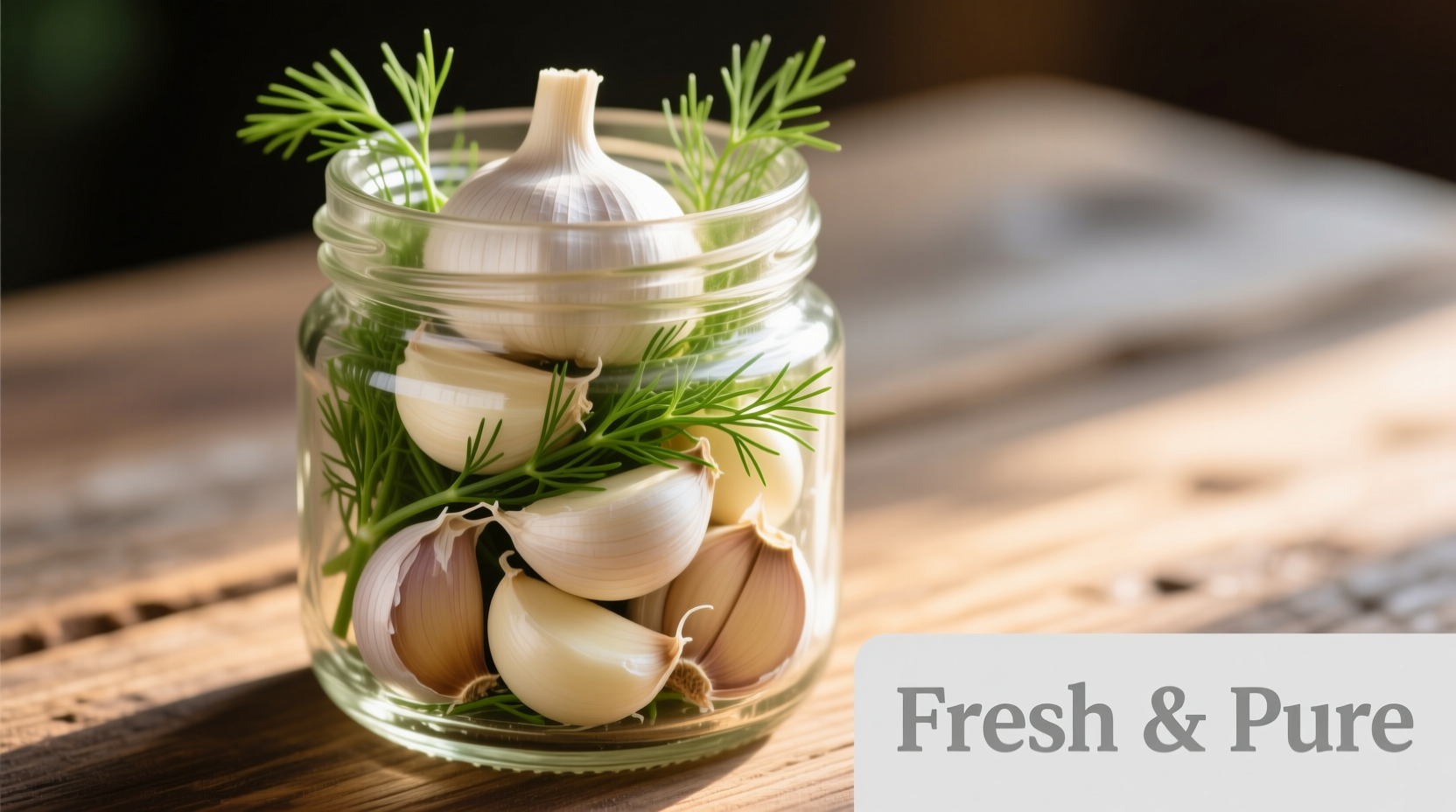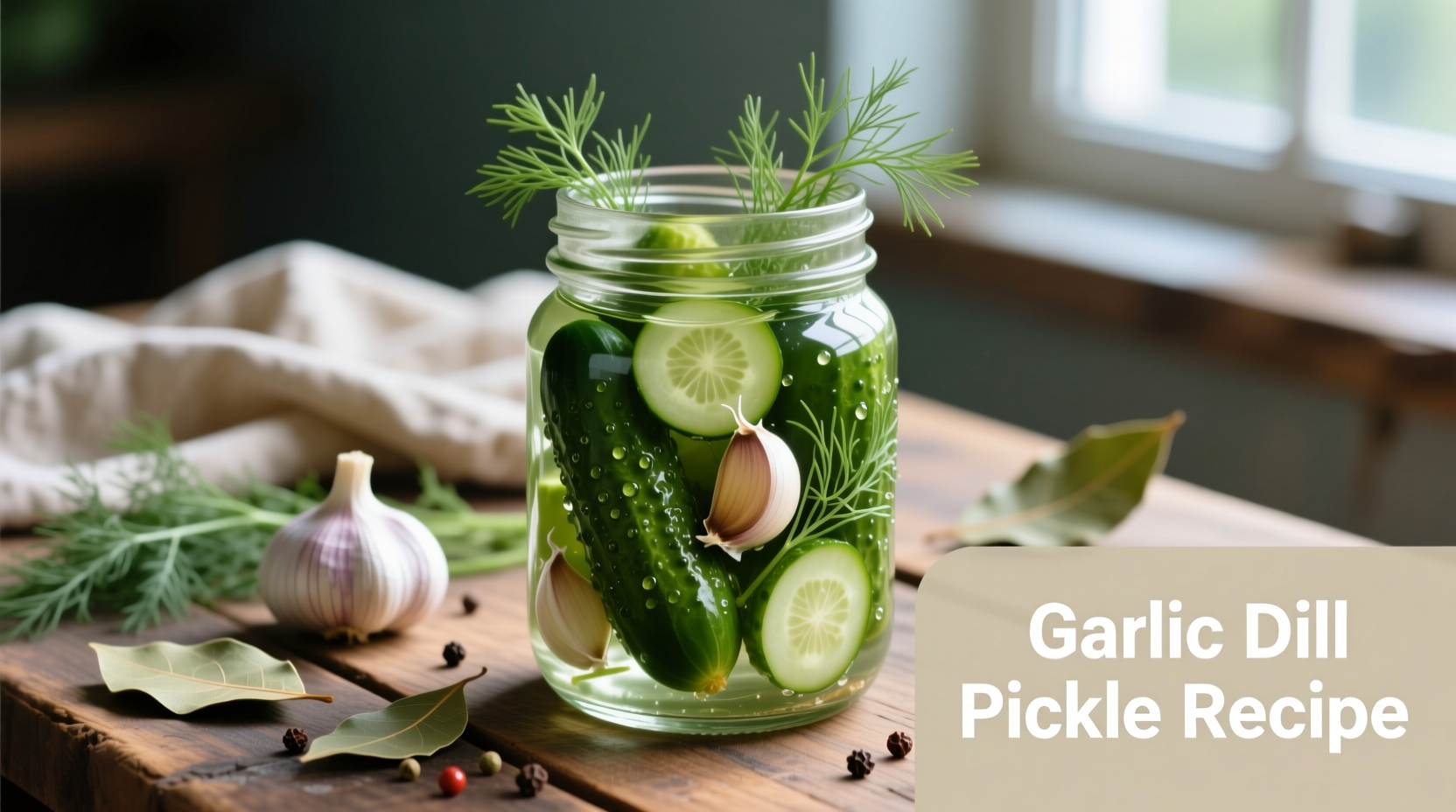There's nothing quite like the satisfying crunch of homemade garlic dill pickles straight from the jar. This refrigerator pickle recipe delivers consistently crisp results without the complexity of traditional canning. As a culinary professional who's taught thousands of home cooks the science behind perfect pickling, I've refined this method to maximize flavor while ensuring food safety. The secret lies in the precise vinegar-to-water ratio and the strategic addition of garlic at different stages for layered flavor.
Why This Garlic Dill Pickle Recipe Works
Unlike many online recipes that promise crispness but deliver soggy results, this method incorporates three critical food science principles that professional picklers use. First, the 50-50 vinegar-to-water ratio creates the perfect acidity level (pH 3.8-4.0) for both safety and flavor, as recommended by the National Center for Home Food Preservation. Second, adding grape leaves or black tea to the jar introduces tannins that maintain crispness by inhibiting enzymes that cause softening. Third, the two-stage garlic addition—whole cloves for subtle infusion and minced for immediate flavor—creates complex garlic notes without overwhelming bitterness.
| Vinegar Type | Acidity Level | Best For Pickles? | Flavor Profile |
|---|---|---|---|
| Distilled White Vinegar (5%) | 5% minimum | ✓ Ideal | Clean, sharp tang |
| Apple Cider Vinegar | 5% minimum | ✓ Good | Slightly fruity, mellow |
| Wine Vinegar | 5-7% | △ Acceptable | Complex, nuanced |
| Rice Vinegar | 4-5% | ✗ Not recommended | Mild, sweet |
Vinegar comparison for safe and flavorful pickling - always use 5% acidity minimum for refrigerator pickles
Essential Ingredients Explained
The magic of exceptional garlic dill pickles happens through ingredient quality and proper ratios. Don't substitute blindly—each component serves a specific purpose:
- Fresh Kirby cucumbers (2 lbs) - Their firm texture and small size make them ideal for pickling. Avoid waxed cucumbers as the brine won't penetrate properly.
- Garlic (6-8 cloves) - Use fresh, firm cloves. Older garlic can cause discoloration. For best results, add 4 whole cloves per jar plus 1 minced clove for immediate flavor impact.
- Dill (1/4 cup fresh) - Fresh dill heads provide superior flavor to dried. The flowering heads contain concentrated essential oils.
- Distilled white vinegar (1.5 cups) - Must be 5% acidity for proper preservation and safety.
- Water (1.5 cups) - Filtered water prevents mineral interference with the pickling process.
- Non-iodized salt (1.5 tbsp) - Iodine can cause discoloration. Pickling salt or kosher salt work best.
- Grape leaves or black tea bag (1 per jar) - Natural source of tannins that maintain crispness.

Step-by-Step Garlic Dill Pickle Process
Preparation Phase (15 minutes)
- Wash 2 quart-sized mason jars and lids with hot soapy water; rinse thoroughly
- Trim 1/16 inch from both ends of cucumbers to remove enzymes that cause softening
- Slice cucumbers into 1/4-inch rounds or leave whole for traditional spears
- Peel 4 garlic cloves and leave whole; mince 2 cloves for immediate flavor
- Place 1 grape leaf or tea bag in bottom of each clean jar
Brine Creation & Jar Packing (5 minutes)
- Combine vinegar, water, salt, and sugar (if using) in saucepan; bring to boil
- Layer cucumbers, dill heads, whole garlic cloves, and minced garlic in jars
- Pour hot brine over ingredients, leaving 1/2 inch headspace
- Remove air bubbles by tapping jars gently on counter
- Wipe rims clean and secure lids fingertip-tight
Maturation Timeline
Refrigerator pickles develop flavor over time. Understanding this evolution helps you enjoy them at their peak:
- 24 hours: Tangy flavor begins to develop, but garlic notes are subtle
- 3 days: Optimal balance of dill and garlic flavors (recommended first tasting)
- 1 week: Complex flavor profile fully developed with pronounced garlic notes
- 2-4 weeks: Peak flavor and texture (maximum recommended storage)
Troubleshooting Common Issues
Even with perfect technique, occasional issues arise. Here's how to address them:
- Soft or mushy pickles: Caused by improper cucumber selection or insufficient tannins. Always use fresh Kirby cucumbers and include grape leaves. Never skip the end trimming step.
- Cloudy brine: Normal with salt containing anti-caking agents. Use pure pickling salt to prevent. If accompanied by off-odors, discard the batch.
- Bitter garlic: Results from overcooking garlic. Add minced garlic directly to jars rather than boiling in brine. Use fresh, firm garlic cloves.
- Weak flavor: Insufficient maturation time. Allow at least 3 days before tasting. Increase dill or garlic quantities in next batch.
Customization Options
Once you've mastered the basic recipe, experiment with these professional variations:
- Spicy Garlic Dills: Add 1-2 sliced jalapeños or 1/2 tsp red pepper flakes per jar
- Sweet Garlic Dills: Include 1 tbsp sugar in brine for balanced sweet-tangy profile
- Mediterranean Style: Add 1 tsp dried oregano and 1/2 tsp lemon zest per jar
- Smoky Garlic Dills: Include 1/4 tsp liquid smoke or 1 small piece of chipotle pepper
Storage Guidelines
Refrigerator pickles maintain best quality for 2-4 weeks when stored properly. Always:
- Keep jars fully submerged in brine (add more 50-50 vinegar-water mix if needed)
- Store at consistent refrigerator temperature (below 40°F/4°C)
- Use clean utensils when removing pickles to prevent contamination
- Discard if you notice mold, off-odors, or significant color changes
Unlike canned pickles, refrigerator versions don't require processing in a water bath, making them perfect for beginners. However, they must remain refrigerated at all times and have a shorter shelf life than properly canned products.











 浙公网安备
33010002000092号
浙公网安备
33010002000092号 浙B2-20120091-4
浙B2-20120091-4